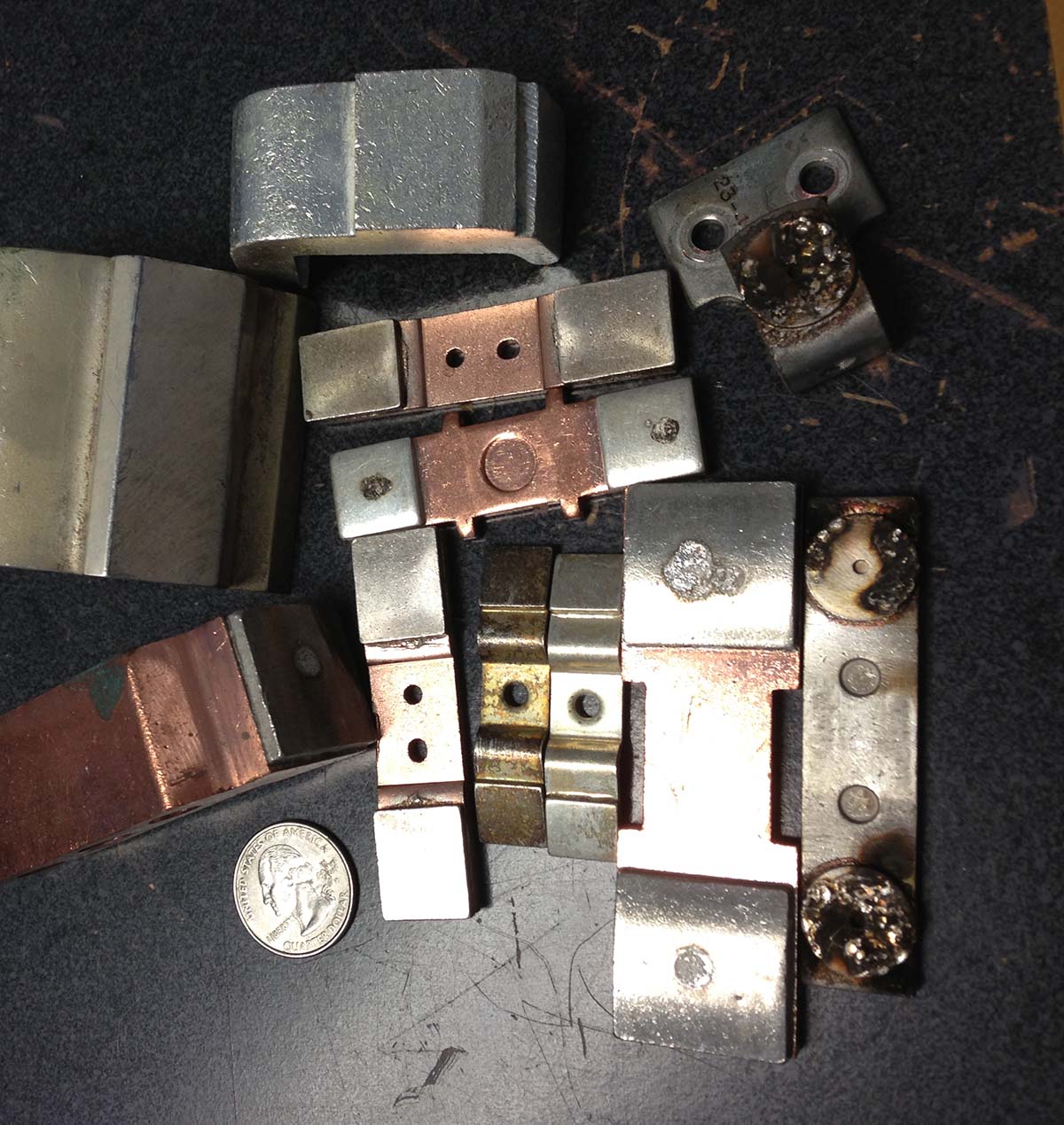I know this has been asked a million times...but I have a ton of these silver alloy contact tips from large electrical motor starters. I've read up on how to refine them, but I have two questions.
1. Are the bars the silver tips are mounted to worth anything? I plan to melt the tips off, but it seems like a waste to throw away the bars.
2. Are the burned/black tips still usable?
I've attached a photo of showing a few of the ones I want to refine.

1. Are the bars the silver tips are mounted to worth anything? I plan to melt the tips off, but it seems like a waste to throw away the bars.
2. Are the burned/black tips still usable?
I've attached a photo of showing a few of the ones I want to refine.











































































